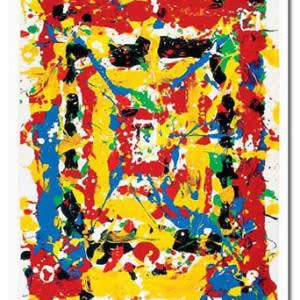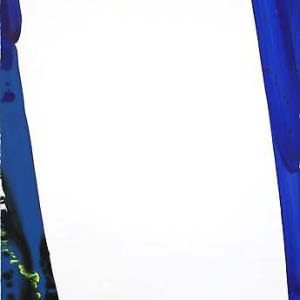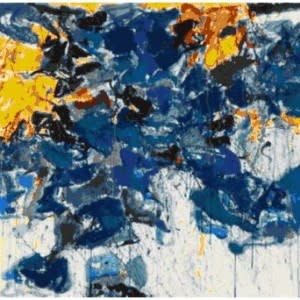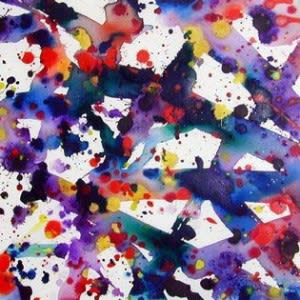Seeing the art of American Abstract Expressionist Sam Francis is nothing less than an adventure. Vibrant colors hit the canvas like notes from a jazz musician, with white space representing time and tempo. In time, the white space would come to dominate more of Sam Francis’ paintings. As experienced jazzmen taunted their unique power over the fermata − “a pause of unspecified length on a note or rest”, Sam Francis confronted white space on his unique terms, tugging at the space, leaving his mark of movement and pure expression. His work speaks to the enormous confidence of an artist who held back nothing, leaving it all on the canvas.
Painting is about the beauty of space and the power of containment.
– Sam Francis
Sam Francis is credited with breathing life into the art movement known as the second generation of Abstract Expressionism, which took shape in New York during the 1950’s and included such artists as Joan Mitchell and Helen Frankenthaler. Born in San Mateo, CA, Francis spent much of the fifties living in Paris and South France, with various periods of residence spent in Tokyo, Bern, Mexico City and New York. Considering the length of time Sam Francis spent in Paris, it’s no wonder that lines are drawn between his use of light and color and that expressed by Matisse and Monet. Francis’ drip techniques are most certainly a connected to the influence of American Abstract Expressionism. Another strong influence in the works Sam Francis Japan and the artist’s affinity for Japanese art, whose elements are of note in a number of the artist’s works.
Of the work for which Sam Francis is known, his Edge Paintings are highly regarded for their contributions to minimalist style of contemporary art that rose to prominence in the 1960s Abstract Expressionist movement. Viewing a Francis Edge painting is gripping. With a grand use of white space dominating the work, one can’t help but feel the push and pull – of the artist’s intention and of the suggested action beyond the physical edge of the painting. Does the action begin at the edge and work out, does it close in from the outside, toward the center of the work?
Color is born of the interpenetration of light and dark.
– Sam Francis
In the early 70s, Sam Francis created a number of works referred to as his “Fresh Air” period. As with all Francis work, color dominated the subject. The process for the Fresh Air pieces included applying pools of color, along with drips and splatter, to wet paint applied by rollers. The results were pure Francis expression – masterful use of color representing a spectrum of emotion. By the middle of the decade, Francis was producing a works in a more formalized grid fashion, using deep vibrant crossing colors. Known for his joy in producing large scale works, many of the grids measured upwards of twenty feet long.
An important aspect of Sam Francis’ history includes the artist’s foray into printmaking. Lithography was the first such printmaking technique that Francis mastered, and in 1970, when he opened the Litho Shop in Santa Monica, CA, it demonstrated his commitment to print at a time when a majority of established painters were not comfortable with the idea. In typical form, Sam Francis followed his own path, with immense success.
In May of this year, at Southeby’s sold Francis’ Symphony in Blue – 1958, Gouache and watercolor on paper, 27 x 39.4” for $1,145,000 – An auction record for a work on paper by the artist.
At our Boca Raton, FL Contemporary Art gallery, Sam Francis prints and originals are always on our radar. If you’re interested in our assistance in sourcing Sam Francis works for sale, contact us via phone, email, or drop in any time.




